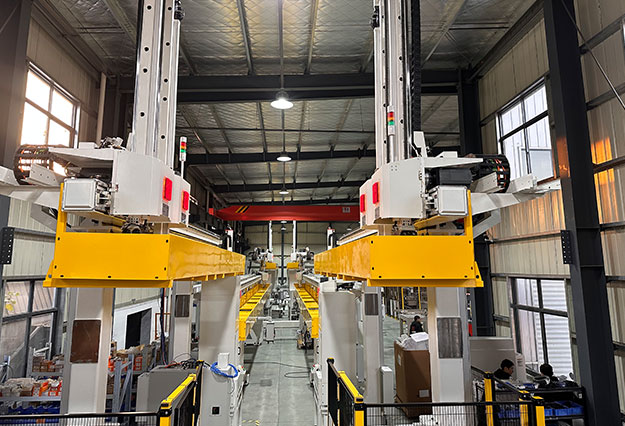NEWS
The development of automatic line has witnessed two major changes from rigid automatic line to flexible automatic line, and now in China, these two forms have been applied. In the rigid machining automatic line, there are various transmission methods, including ratchet pawl, swing rod, lifting pace and motor raceway. However, with the vigorous development of machining center machine tools, the automatic line constructed by it has gradually replaced the traditional combined machine tool automatic line, and has won wide praise in the market by virtue of its advantages in adapting to small batch and multi-variety production, and has been given the good name of "flexible processing automatic line".
Although these flexible machining automatic lines with machining center machine tools as the core still retain the rigid characteristics on the conveying device, they have initially possessed the characteristics of flexibility, and can be seen as quasi-flexible automatic lines. Today's flexible processing automatic line is to achieve a qualitative leap, the transmission method is no longer limited to rigidity, but into the flexible elements, such as the truss automatic line, and even to achieve pure flexible transmission, that is, the entire transmission system is completely composed of the truss manipulator.

The introduction of the truss automatic line makes the transmission step of the automatic line flexibly adjusted according to the machine tool configuration, the installation position between the machine tools is no longer limited to the rigid transmission, and the transmission speed can also be adjusted according to the production rhythm and transmission distance. More importantly, when the product type of the processed parts changes, the conveying part does not need to be completely replaced, and only the local structure of the conveying program and the manipulator can be adjusted, which fully reflects the flexibility of the flexible conveying.
In addition, the advanced nature of the truss automatic line in transportation is also reflected in the fact that it can achieve the overall automation and intelligent coordination and unification of the machine tool flexible processing automatic line. Therefore, the application of the truss manipulator in the flexible machining automatic line is increasingly extensive, and the entire production process is accurately controlled by the information flow system.
Nowadays, the truss manipulator, as the core component of the flexible conveying system, plays an important role in the flexible machining automatic line. Compared with the past without the use of automatic truss lines, its conveying part is called the conveyor belt or conveying device, and now it is upgraded to the conveying system or logistics system. These advances benefit from the improvement of the technical level and solve the key technologies and difficulties of the truss manipulator. Looking forward to the future, with the continuous progress of domestic truss manipulator technology, its application prospects in flexible machining automatic lines will be broader.